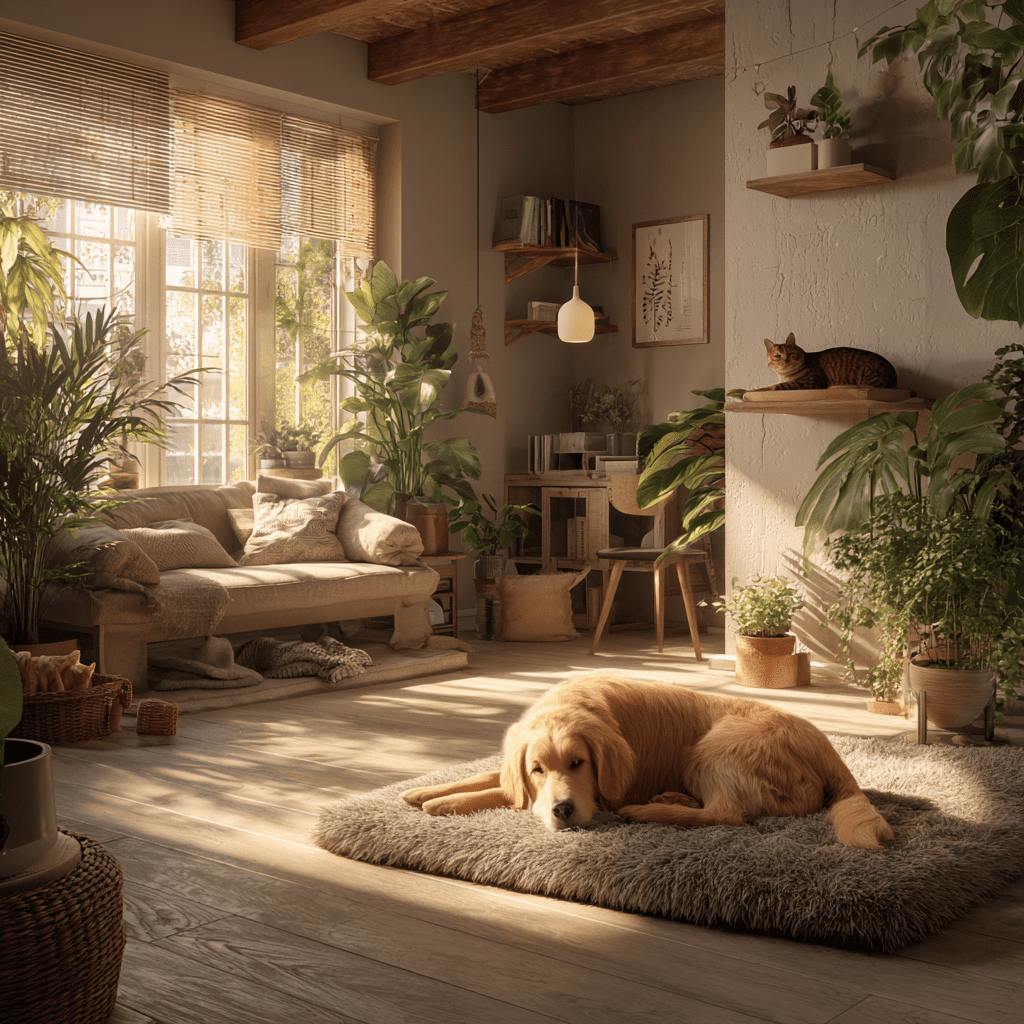Introduction
Our pets are more than just animals—they’re family. Just like us, they can feel the effects of a noisy, chaotic, or uncomfortable home. While we may not always notice it, a stressful environment can lead to health problems, behavioral issues, and reduced quality of life for our furry friends.
Creating a stress-free home for your pet doesn’t mean spoiling them with luxury; it’s about understanding their needs, respecting their instincts, and building a safe, calm space where they can thrive.
In this guide, we’ll cover everything from environmental changes and enrichment ideas to daily routines and signs of stress you should watch out for.
1. Understanding What Stresses Pets Out
Before making changes, you need to know what’s making your pet uneasy.
Common causes of stress in pets include:
- Loud noises (fireworks, vacuum cleaners, traffic)
- Unpredictable routines
- Overcrowding or lack of personal space
- Boredom or lack of stimulation
- Conflict with other pets
- Separation anxiety
- Changes in environment (moving, new furniture, guests)
Pro tip: Keep a journal of when your pet seems anxious to identify triggers.
2. Create a Safe Space

Every pet should have a dedicated area in your home where they feel secure.
For Dogs:
- Use a crate or cozy corner with soft bedding.
- Add familiar toys and an item with your scent.
- Position it away from heavy foot traffic.
For Cats:
- Provide high perches or hideaways like cat trees.
- Use enclosed spaces like covered beds or boxes.
- Make sure they have quiet access to their litter box.
Why it works: A safe space allows pets to retreat and decompress when overwhelmed.
3. Maintain a Consistent Routine
Pets feel safer when they know what to expect. Consistency in feeding, walking, and playtime helps reduce anxiety.
Daily schedule ideas:
- Morning: Walk or play session, then breakfast.
- Midday: Short play or potty break.
- Evening: Dinner at the same time daily.
- Night: Calm bonding time before bed.
4. Manage Noise and Chaos
Loud or sudden noises can frighten pets.
Tips to reduce noise stress:
- Use white noise machines during loud events.
- Play soft, calming music (classical or nature sounds).
- Avoid yelling or sudden loud TV volume changes.
5. Enrichment and Mental Stimulation
Boredom can lead to destructive behavior and anxiety.
Ideas for Dogs:
- Puzzle feeders
- Hide-and-seek games
- Interactive fetch indoors
Ideas for Cats:
- Food-dispensing toys
- Laser play sessions
- Window perches for bird-watching
Why it helps: Mental stimulation keeps pets engaged, reducing nervous energy.
6. Minimize Changes When Possible
Big life changes—like moving or introducing a new pet—can be overwhelming. When changes are unavoidable:
- Introduce new environments gradually.
- Keep familiar bedding and toys nearby.
- Offer extra affection and reassurance.
7. Manage Interactions with Other Pets
If you have multiple pets, ensure they have space to be alone.
- Feed them separately if they’re food-protective.
- Offer individual play sessions.
- Watch for signs of tension and separate if needed.
8. Watch for Signs of Stress
Knowing when your pet is stressed allows you to act quickly.
Signs in Dogs:
- Pacing
- Excessive panting
- Whining or barking
- Destructive chewing
Signs in Cats:
- Hiding
- Excessive grooming
- Refusal to eat
- Aggression
If these persist, consult your veterinarian.
9. Use Calming Aids When Needed
- Pheromone diffusers (like Feliway for cats or Adaptil for dogs)
- Weighted or anxiety wraps (ThunderShirt)
- Natural calming treats (vet-approved)
10. Your Attitude Matters
Pets pick up on your emotions. Maintaining your own calm demeanor will help them feel more secure.
- Avoid overreacting to small accidents.
- Practice positive reinforcement for good behavior.
- Make bonding time a priority.
Conclusion
A stress-free home for your pet is built on consistency, safety, stimulation, and love. By understanding their needs and making thoughtful adjustments, you can create an environment where your furry friend feels secure, happy, and healthy every day.
Remember—happy pet, happy home. ❤️
